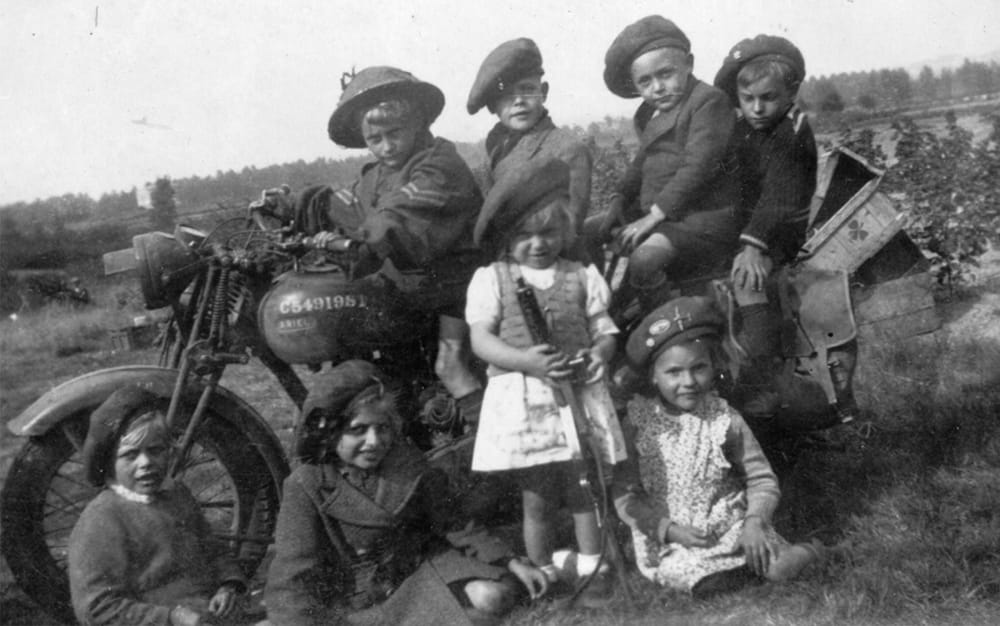In some other thread Henri posted a picture of an unusual oilcap. I actually bought a set at the last Beaulieujumble from a German trader and was hoping it was a early version.
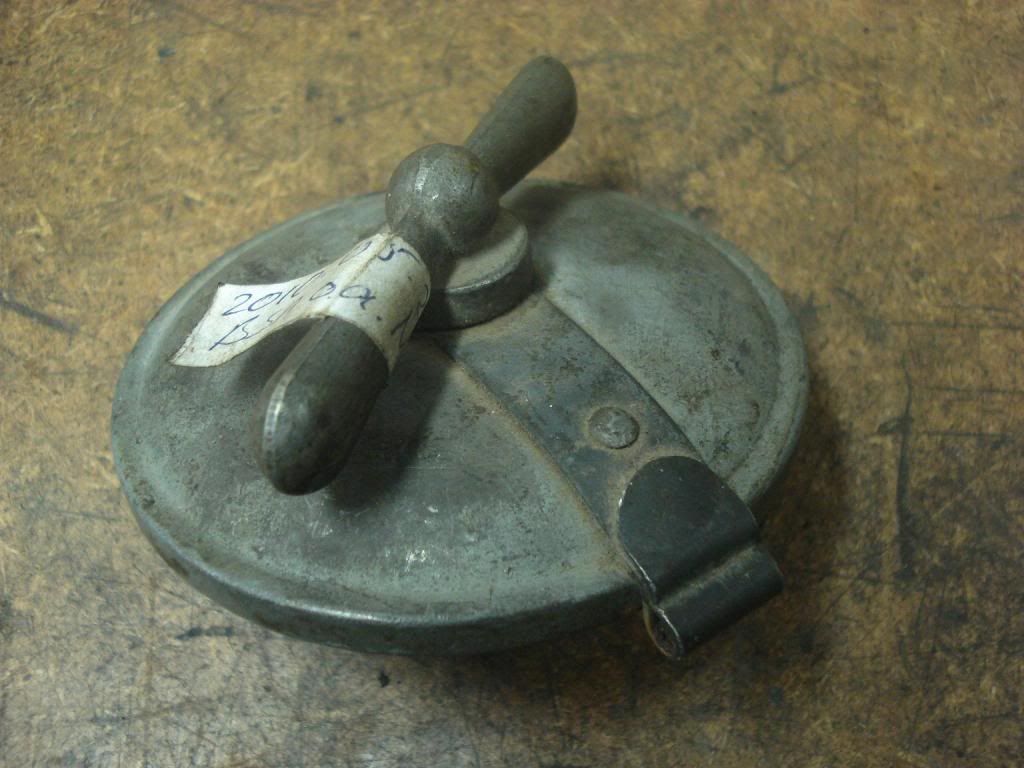
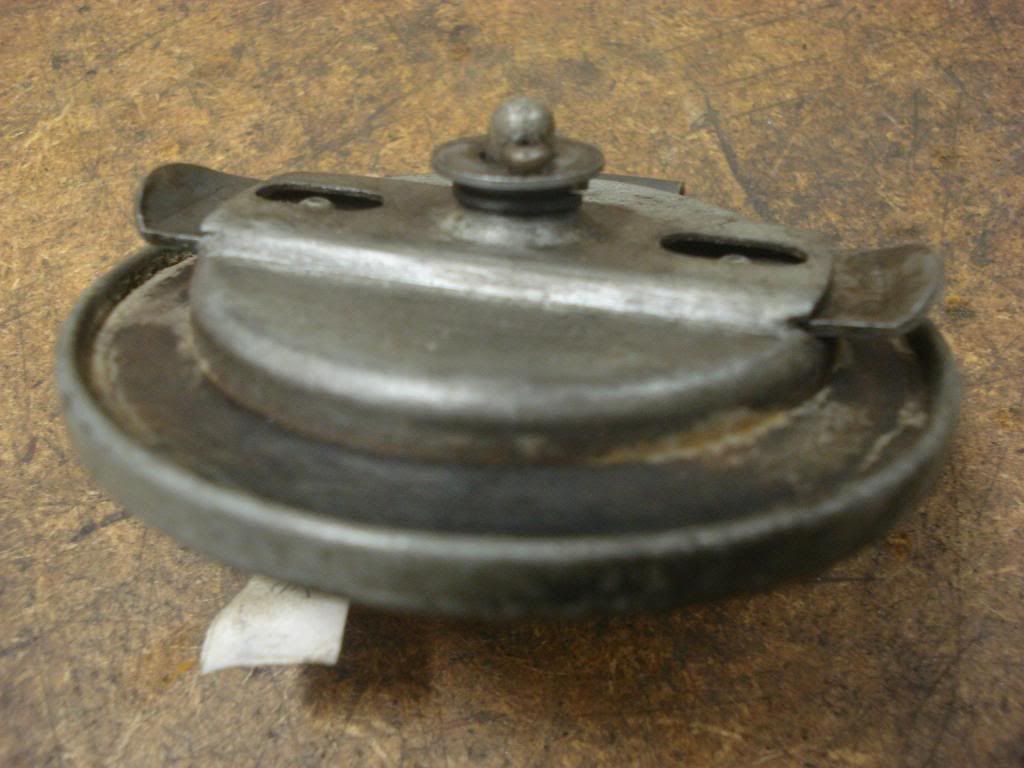
Looking closer at the function, I see the lips are moving only just parallel so the cap will not be pulled against the tankring, like the usual design does. Should there be a sort of chamfer in the opening of the tank where the angled lips of the cap are falling behind and pull the cap that way ??
Does someone know the years these caps were used and shine some more light on the function ??
Thanks, Michiel
email (option): m.wijbenga@hotmail.com
I seem to remember that when I bought my bike originally in 1970 or 71, straight outta the crate, it had a non cutaway tank and brass blades in both petrol and oil tank caps.
But, that was 40 + years ago.
I think as the war progressed and material shortages came up ways to simplify production and substitute this material for that were the rule of the day. Seems a rule of thumb could be the nicer stuff is early, whilst the later stuff is a bit more crude, or made with cheaper materiels.
email (option): britool51@hotmail.com
For many years we, here in Holland, had the idea that these were early caps. Not to sure about that anymore I am afraid.
Henk.
email (option): ahum@quicknet.nl
We did discuss these some time ago, I seem to remember opinion leaning towards them being a postwar replacement part, but I have not seen any written evidense to prove it Rob.
Rob.
email (option): robmiller11@yahoo.co.uk
This could be it, if so its around 1945?
http://worldwide.espacenet.com/publicationDetails/biblio?DB=EPODOC&II=38&ND=3&adjacent=true&locale=en_gb&FT=D&date=19470513&CC=GB&NR=588067A&KC=A
email (option): robmiller11@yahoo.co.uk
Hi Rob, good find !!, this reminded me that there was a patentnumber on the inside, PATENT 556954, Westwood type 42.
When you type this number in the same website, you get an even better drawing which totally clears the working and the date 28 april 1942 (or 28-10-1943 ??, both dates are stated)
http://worldwide.espacenet.com/publicationDetails/biblio?DB=EPODOC&II=9&ND=3&adjacent=true&locale=en_EP&FT=D&date=19431028&CC=GB&NR=556954A&KC=A
Thanks, , Michiel
, Michiel
email (option): m.wijbenga@hotmail.com
Nice one Michiel, earlier than I thought Rob.
Rob.
email (option): robmiller11@yahoo.co.uk
Does this mean that the internal form of the filler neck changed or were M20 tanks always suitable ?
There certainly doesn't seem to be much for them to engage with in a Norton neck (but I've never seen them on Nortons either).
The patent date doesn't necessarily indicate that they went immediately into service as fuel filler caps.
They're certainly not fitted to C5554820 as it comes off the production line.
The patent description suggests that radiator caps might have been the initial market. Did the RAOC find a huge stock of rad caps in the 1950s and find that they could be used instead of the no longer available Enots type ?
Hi Rik, At first I thought this cap needed a different neck than the standard one but at closer look the standard neck does have an small angular part where the lips can grab behind. The cap will also fit my 1940 balloon tank.
Your right, the patent date says nothing about when they were used and maybe they are not used on M20's at all but just fit them..... Regards, Michiel
email (option): m.wijbenga@hotmail.com
Thanks for confirming Michiel. These caps do seem to appear on late disposal M20s. I've noted them a few times on the bikes which appear in the US - and the US apparently has more unrestored 'as-demobbed' BAOR machines than anywhere else.
The hunt is on for a wartime photo with one of these !
Hi Rik, Yes maybe it will show up sometime, till that time I label it as postwar..
Any news on the Red square with the 2? I decided to leave the tank just as it is and try to give the rest of the bike a similar used look. It is rolling again with gearbox done, now time for the engine. Regards, Michiel
email (option): m.wijbenga@hotmail.com
Michiel, sorry - no news on the markings yet. I'm expecting some further confirmation but the 1st Armoured Div stuff is difficult as they'd only just arrived in France and don't appear in the main BEF listings. It's a matter of relying on other people going to the archives in Kew - and then having the luck or skill to find the relevant files.
Rik
Hi Rik, as you know I am very happy for what has been found out already, and would be great to solve the whole mistery,  Michiel
Michiel
email (option): m.wijbenga@hotmail.com
Henk, what year does the parts list on the forum come from? Those lists show that type of fuel and oil cap.
The post-war BSA parts lists on your CD shows that type of oil tank cap in the 1947 list.
email (option): rays54@hotmail.com
Good find, Ray, I did check these partslist but only for the fuelcaps. The oilcap 66-8351 looks indeed like the Westwood version for sure, and are also in the 48-52 partslist and used on 51-52 Goldstar petroltanks.
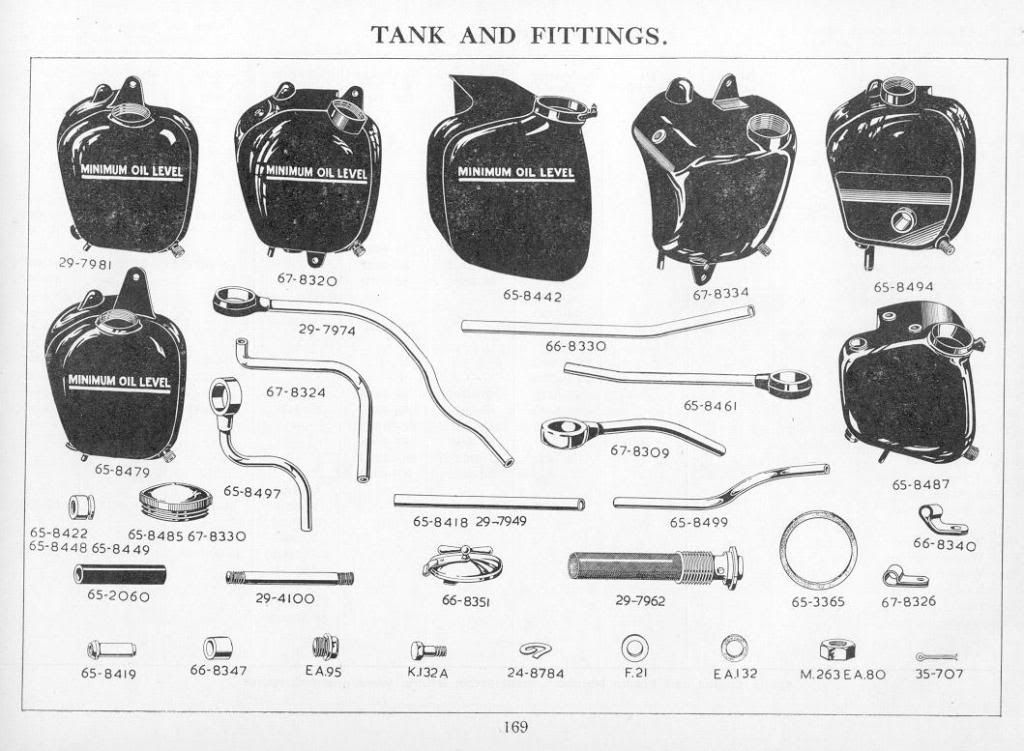
But the fuelcap 66-8215 is drawn like the standard one:
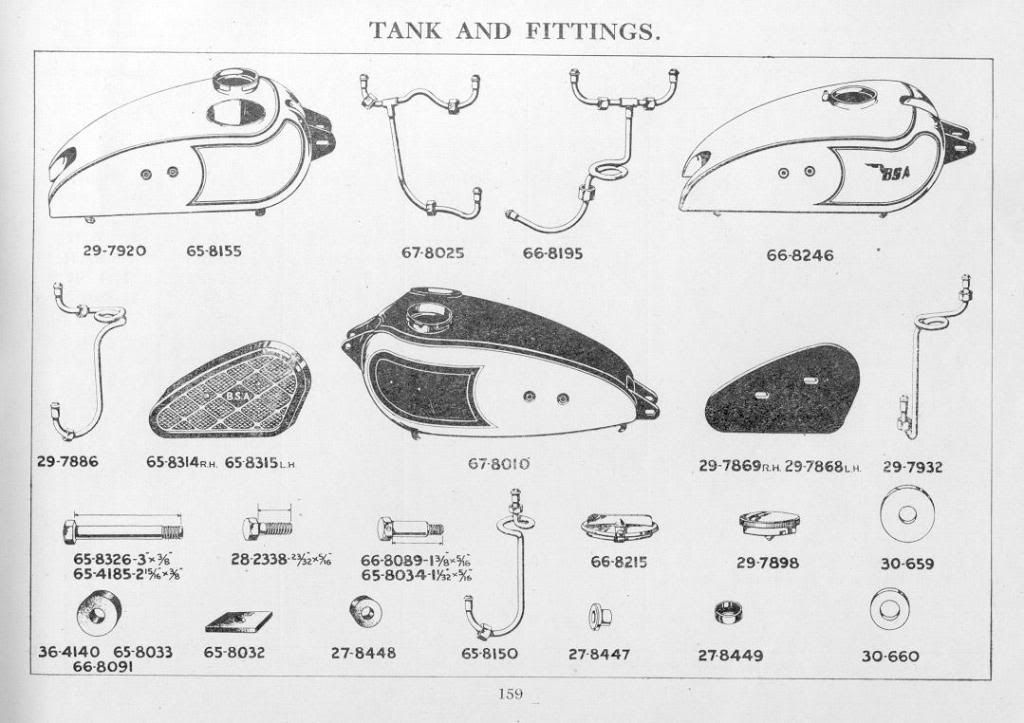
And to make it more complicated I found this drawing on this website ( /pictures/WD M20 parts ) with the same partnumber 66-8215 but drawn like the Westwood cap. So this fuelcap used on the WDM20 afterall or a not so accurate drawing ??
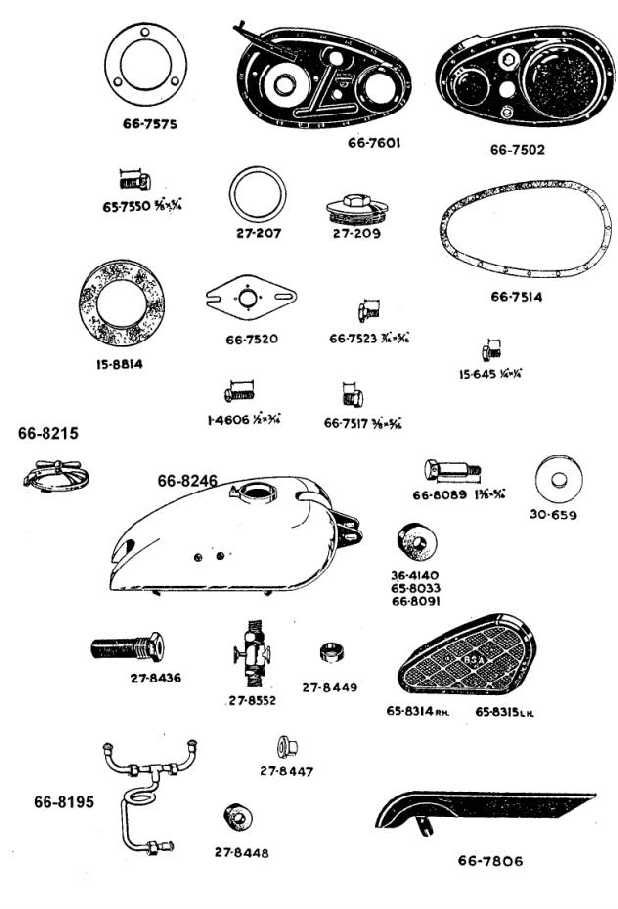
Regards, Michiel
email (option): m.wijbenga@hotmail.com
I say this in a light hearted way! But isn't it funny how they can dig up a bit of a dinosaur bone and work out what it had for dinner a million years ago. Here we are trying to work out the correct petrol cap for a 70 year old bike.  Ron
Ron
email (option): ronpier@talk21.com
Hi Michiel..For the M20/21 petrol tank the larger 'flip top' caps were no longer fitted to civilian models after the last year of the girder fork types. With the intoduction of tele forks the tank was changed and a 'bayonet' type cap was fitted.
Gold Stars and AA contract bikes continued with the 'flip top' style of cap for the petrol tank but in the smaller oil tank cap size. For the M20/21 oiltank the flip top cap was retained to the end of the models production and it was also fitted to some Gold Star oil tanks (plunger models)and probably rigid models as well, for although the Gold Star was introduced as a plunger model, the rigid frame remained a listed 'option'. The parts list showing the petrol tanks still has the flip top cap for the M20 as the illustration is for a girder fork model..These models retained the WD pattern tank with a semi matt silver finish, black lining and BSA logo and twin taps (M Series civvy models only had one tap after the introduction of tele forks)..also the painted BSA logo was replaced for the first tele fork models with the small metal badges...Ian
email (option): ian@wright52.plus.com
Hi Ian, Thanks for your explanation about the different fuelcaps, Maybe they had a choice to put Enots or Westwood caps on and not bothered to change the illustration in the partslist everytime. I found a few pictures of postwar M20 girders with the Westwood oilcaps so that one is dated now. Use of the larger Westwood fuelcap will still be a mystery for me.
And Ron, Yes, and it is wonderful to have the luxury to keep ourselves busy with these small questions, although I can imagine it will not excite everyone, especially not the ones with a shed full of wonderfully restored original motorcycles, cheers,  .. Michiel
.. Michiel
email (option): m.wijbenga@hotmail.com
